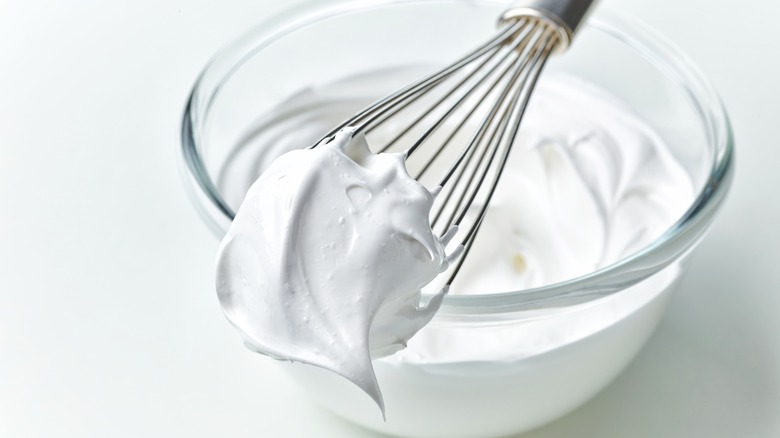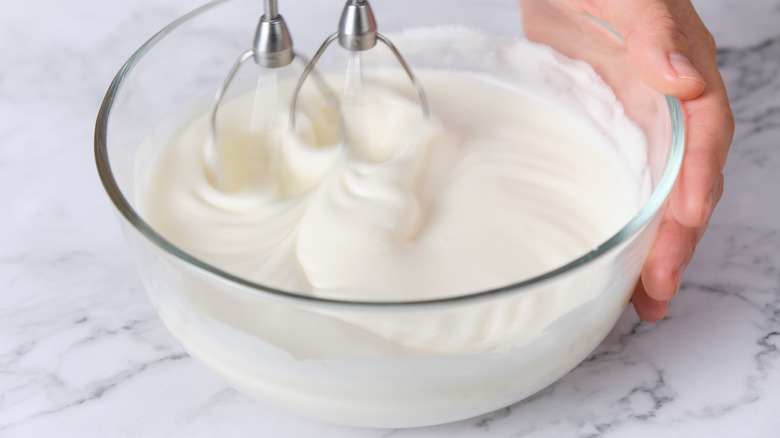What Happens When You Overmix Egg Whites (And How To Fix It)?
With time and patience, an egg will be the easiest thing that you ever cook with, but hurry through it and you'll be left with an unnecessary mess. This is especially true if you're working with whipped egg whites to make glossy meringues, airy soufflés, and exquisitely delicate chiffon cakes. Nothing spells a baking disaster like an overbeaten egg.
Egg whites begin as a thick translucent liquid that turns foamy as you whip them. At the first stage of mixing, egg whites will have soft peaks, distinguished by being mushy and less firm. As you continue mixing the egg whites, the mixture will gain stability and hold its shape (also called stiff peaks). However, if you whisk any longer, you risk overbeating the egg whites.
The first indication of overbeaten egg whites is the grainy texture that begins to develop around its edges. From there, the fat and liquid quickly separate from the egg whites, resulting in a dry, curdled mess. So unless you want these lumps in your intricate bakes, it's important to fix the overmixed whites. Luckily, a fresh egg is all its takes. Whipping a fresh egg white into the mix can add some moisture back in, consequently salvaging the entire bowl.
Tips to avoid overmixing egg whites in the first place
There is no problem a nifty hack can't solve and the same goes for overmixed egg whites. But what if you don't have an extra egg white to spare? Or the time to go back and fix something that's already a mess? Being careful early on will save you much trouble. To begin with, be sure that no yolks slip into the whites and that the bowl used to whip them is free of any grease that may contaminate the egg whites. It's simpler to separate yolks from the whites when eggs are cold and consequentially easier to get more volume when the whites are room temperature so it's best to plan accordingly.
A pinch of salt sprinkled into the egg whites softens them up for whisking. Adding acids like vinegar, lemon juice, or cream of tartar as well as sugar once the whites begin to form soft peaks can stabilize the mixture and give it volume. You should also whip the egg whites at a low speed, gradually increasing until you are at a medium-high speed. Any higher increases the risk of overmixing your egg whites.
You should also not take breaks when whipping egg whites as it can destabilize the mixture. These small measures will help ensure that you get the desired consistency from your egg whites without having to spend precious time and effort going back to salvage it once it's already overmixed.

